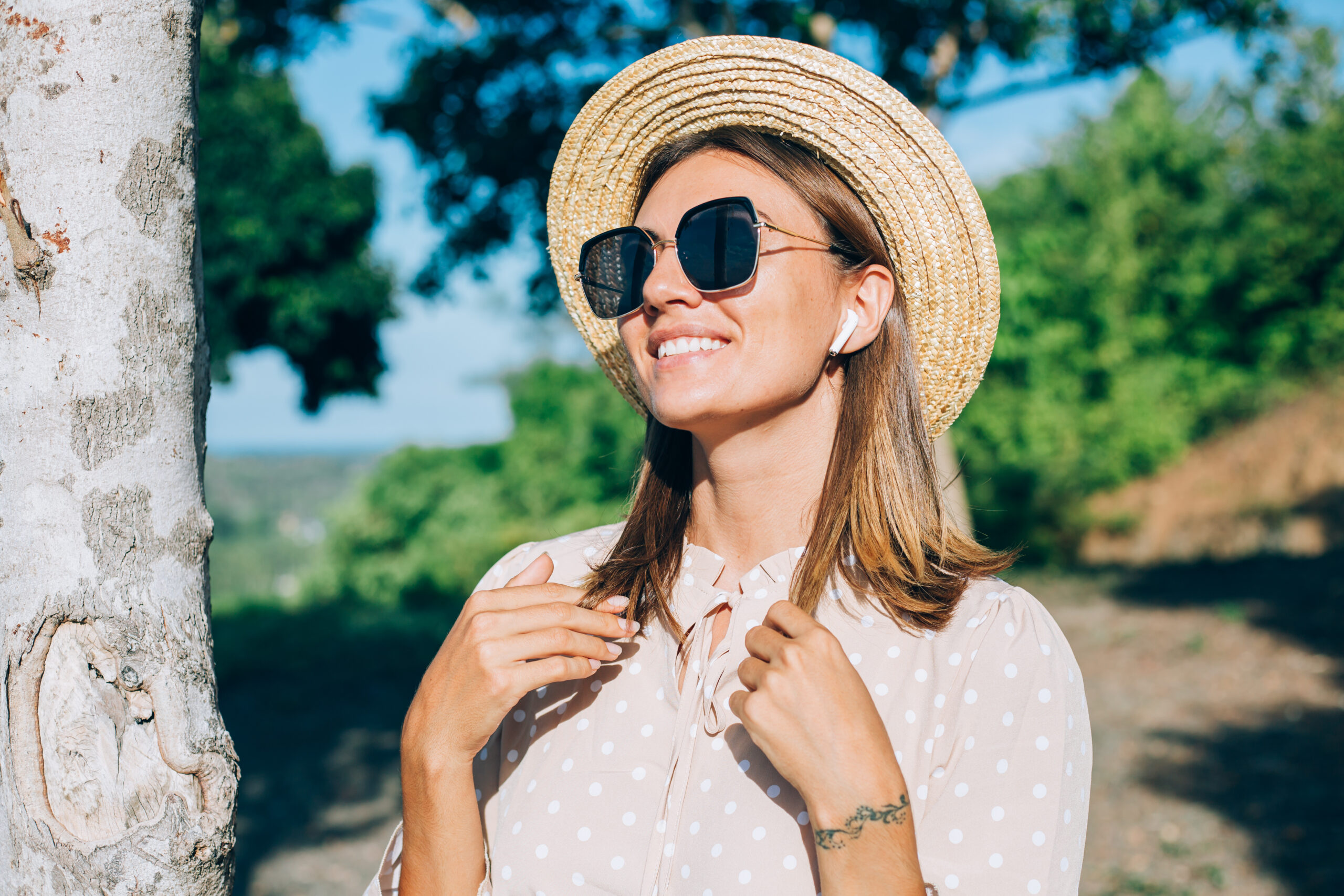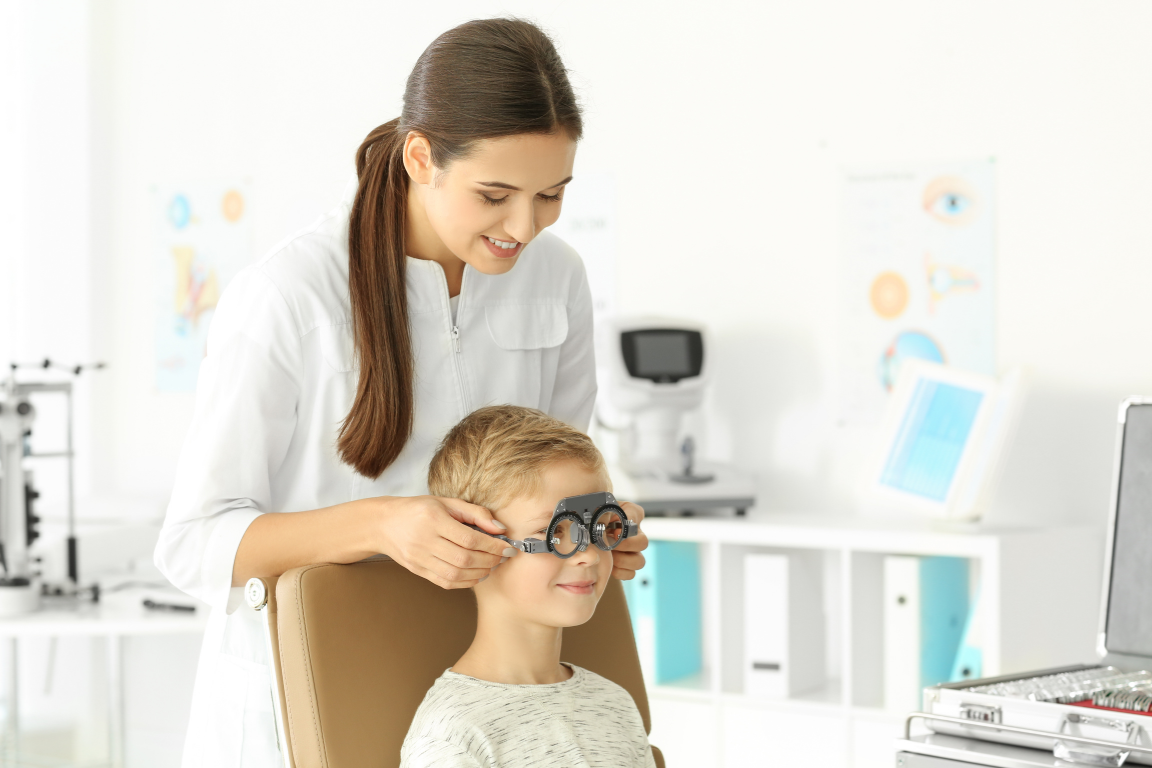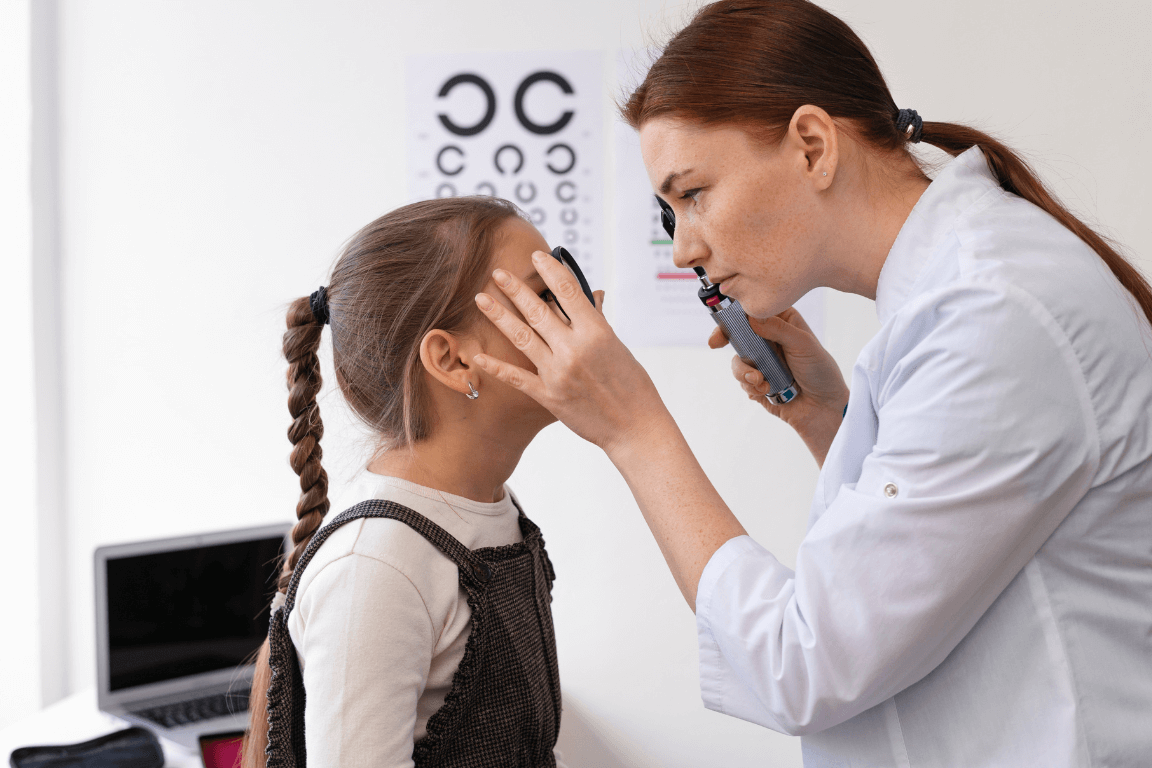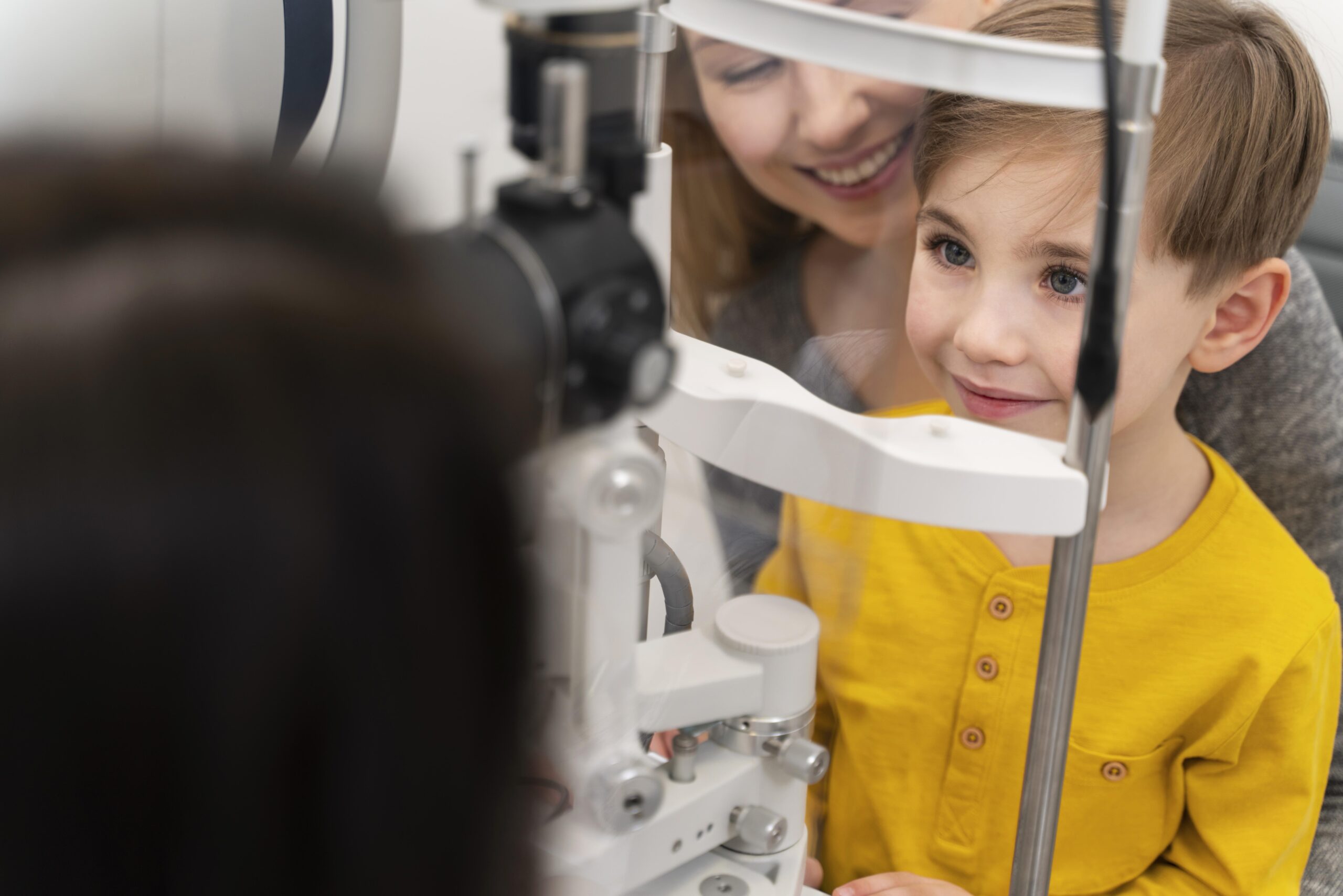Summer is almost upon us. Whether the perfect Australian summer involves the surf, camping, backyard BBQs, or staying indoors with the air conditioning, your patients are relying on you to keep their eyes and vision healthy through these hot and sunny months. While many eye care tips apply year-round, the declaration of El Niño by the Bureau of Meteorology this year means we’re in for a very hot and very dry summer.¹ Here are some tips to discuss with your patients as we move into beach weather.
1. Wear only sunglasses with adequate UV protection.
Ultraviolet radiation is responsible for a number of ocular diseases, some more severe than others. These include cataract, pterygium, photokeratitis, and malignancies of the eye and ocular adnexa.²-⁴ However, although many people are diligent with taking steps to protect their skin from UV-related wrinkles, spots, and sunburns, there appears to be less awareness of the effects of UV radiation on the eyes.⁴
In Australia, sunglasses must meet the mandatory standard of blocking ultraviolet radiation between 280 and 400nm, which falls under the Australia/New Zealand Standard AS/NZS 1067.³,⁵ While sunglasses sold in Australia are required to meet this standard, patients purchasing sunglasses overseas or tinted glasses sold as “fashion spectacles” may be unaware that these may not be providing the UV protection they need. Some patients may also mistakenly believe that the colour or darkness of the lens tint relates to the lens’ ability to block UV radiation.³ Luckily, you’re there to tell them otherwise! Other factors to remember when helping your patients choose sunnies are to aim for large, wraparound frames that can sit close to the face to maximise protection.
While on the topic of sunglasses, it may be worthwhile a gentle reminder that sunglasses only protect the eyes when worn on the face – not on top of the head like an expensive headband!
2. Children should wear sunnies too.
While many parents have invested in designer sunglasses for themselves, not as many remember that their children’s eyes also need protecting from the sun. Given that children are more vulnerable to sun exposure – they tend to spend more time outdoors and the crystalline lens of a child under 10 years of age transmits more UV radiation compared to older individuals⁶ – eye protection is crucial.
Admittedly, children can be funny creatures and may refuse the idea of wearing sunglasses purely on principle. Involving them in the frame selection process may make them more likely to wear their sunnies, as well as thoroughly educating their parents on the importance of UV protection.
3. Consider polarised sunglasses for water activities.
If summer is all about sailing, surfing, and swimming for your patient, polarised sunglasses are practically a must-have. Reflections off the surface of the water can greatly reduce visual quality and cause discomfort and glare when boating or fishing.
Many patients don’t understand what polarisation is. You can consider getting your patient to step outside on a sunny day and demonstrate the difference between a polarised sunglasses lens and a non-polarised lens. Point out how much more comfortable their vision is, and how much brighter and more vibrant colours appear through the polarised lens.
4. Use artificial tears and lubricants for dry eye.
Australian summers already tend to be hot and dry. With El Niño on the way, we may possibly see an increased incidence of dry eye disease. Patients with pre-existing dry eye may benefit from prophylactically using tear supplements to protect the ocular surface. They may also need reminding that a single drop is often not sufficient to provide all-day comfort but the lubricant needs to be used regularly throughout the day.
High temperatures and low humidity are factors known to exacerbate dry eye,⁷ which can become problematic during summer for patients who work outdoors. These patients should be counselled to use lubricants frequently and may also need other dry eye therapies.
5. Be mindful of the effects of air conditioning on dry eye.
Air conditioning, while nice and cool, reduces the humidity in the air and can wreak havoc on dry eyes. If your patients are complaining about dry eyes that are worse when indoors, consider asking them about their air conditioning use.
As low air humidity is the underlying cause of dry eye exacerbated by cooling, it would make sense that adding moisture back into the air should help to ameliorate this. Indeed, various studies have found that increasing humidity decreases dry eye symptoms. However, one study found the opposite, postulating that the increased humidity also increased particulate matter exposure, which worsened dry eye symptoms.⁷
Whether you wish to advise increasing or decreasing humidity, at the very least, patients complaining of dry eye symptoms can be advised to avoid sitting right underneath an air conditioner on full blast.
6. Take caution when wearing contact lenses around pools and beaches.
Many patients pursue contact lens wear specifically for the purpose of being able to wear them into the pool or the beach. However, optometrists know the risk this brings – a risk called acanthamoeba keratitis.
The dangers of water exposure to contact lenses seem to be poorly understood amongst contact lens wearers.⁸ Therefore, an excellent tip to share with your contact lens wearing patients during this season of pools and beaches is to, well, avoid wearing their contact lenses to pools and beaches. If the alternative of prescription goggles is decidedly too uncool in an already very hot summer, the optometrist should counsel the patient on minimising the risk as much as possible. This may look like fitting the patient in daily disposables instead of reusable contacts, which are to be removed and discarded immediately after leaving the water. Patients should also be educated on how to recognise an eye infection and what to do if they suspect they have one.
7. Make the most of summer fruits and vegetables for eye-healthy nutrients.
Summer in Australia means blueberries, grapes, oranges, and nectarines. It also means broccoli, carrots, spinach, asparagus, and zucchini.⁹ With the rising costs of living, meal planning around produce that’s in season is a wise choice. To put an eye care-related spin on the very mundane topic that is grocery shopping, you can regale your patients about the benefits of lutein and zeaxanthin from broccoli and spinach; the vitamin A and lutein in carrots; and the vitamins A, C, and E, as well as lutein and zeaxanthin in asparagus.¹⁰
Summary
Summer season is holiday season in Australia, but that’s no reason your patients should let their eye care take a break. In addition to those handy hints on keeping their eyes healthy, the beginning of summer is also a prompt that we’re coming to the end of a calendar year. Time to send out those reminders about health insurance resetting!
References
1. Bureau of Meteorology. El Niño active; positive Indian Ocean Dipole strengthens. http://www.bom.gov.au/. 2023. Available at: http://www.bom.gov.au/climate/enso/. (Accessed October 2023).
2. Yam JC, Kwok AK. Ultraviolet light and ocular diseases. Int Ophthalmol. 2014;34(2):383-400.
3. SunSmart. Sunglasses. https://www.sunsmart.com.au/. 2022. Available at: https://www.sunsmart.com.au/downloads/resources/info-sheets/sunglasses-info-sheet.pdf. (Accessed October 2023).
4. Hatsusaka N, Seki Y, Mita N, Ukai Y, Miyashita H, Kubo E, Sliney D, Sasaki H. UV Index Does Not Predict Ocular Ultraviolet Exposure. Trans. Vis. Sci. Tech. 2021;10(7):1.
5. Product Safety Australia. Sunglasses & fashion spectacles. https://www.productsafety.gov.au/. 2020. Available at: https://www.productsafety.gov.au/product-safety-laws/safety-standards-bans/mandatory-standards/sunglasses-fashion-spectacles. (Accessed October 2023).
6. Lichenstein S. The Benefits of Early Ocular UV Protection in Children: An Overview. https://global.transitions.com/. 2004. Available at: https://global.transitions.com/TransitionsCanadaPro/White%20Papers/The%20Benefits%20of%20Early%20Ocular%20UV%20Protection%20in%20Children%20-%20Dr.%20Lichtenstein.pdf. (Accessed October 2023).
7. Huang A, Janecki J, Galor A, et al. Association of the Indoor Environment With Dry Eye Metrics. JAMA Ophthalmol. 2020;138(8):867–874.
8. Arshad M, Carnt N, Tan J, Ekkeshis I, Stapleton F. Water Exposure and the Risk of Contact Lens–Related Disease. Cornea. 2019;38(6):791-797.
9. Seasonal Food Guide Australia. Australia General Seasonal Produce. http://seasonalfoodguide.com/. 2016. Available at: http://seasonalfoodguide.com/australia-general-seasonal-fresh-produce-guide-fruits-vegetables-in-season-availability.html. (Accessed October 2023).
10. Optometrists Network. Healthy Eyes for Life: The 12 Best Vegetables. https://www.optometrists.org/. 2021. Available at: https://www.optometrists.org/general-practice-optometry/guide-to-eye-health/eyes-the-windows-to-your-health/healthy-eyes-for-life-the-12-best-vegetables/. (Accessed October 2023).





